When it comes to water-based activities, both swimming and snorkeling offer unique benefits and enjoyable experiences. While some may have a preference for one over the other, understanding the main differences between these two activities can help you determine which one might be the better exercise for you.
Swimming is a full-body workout that engages various muscle groups and provides an excellent form of cardiovascular exercise. It’s a versatile activity, allowing you to choose between different strokes – such as freestyle, backstroke, and breaststroke – to target specific muscle groups. In competition settings, swimming requires speed, endurance, and precise technique.
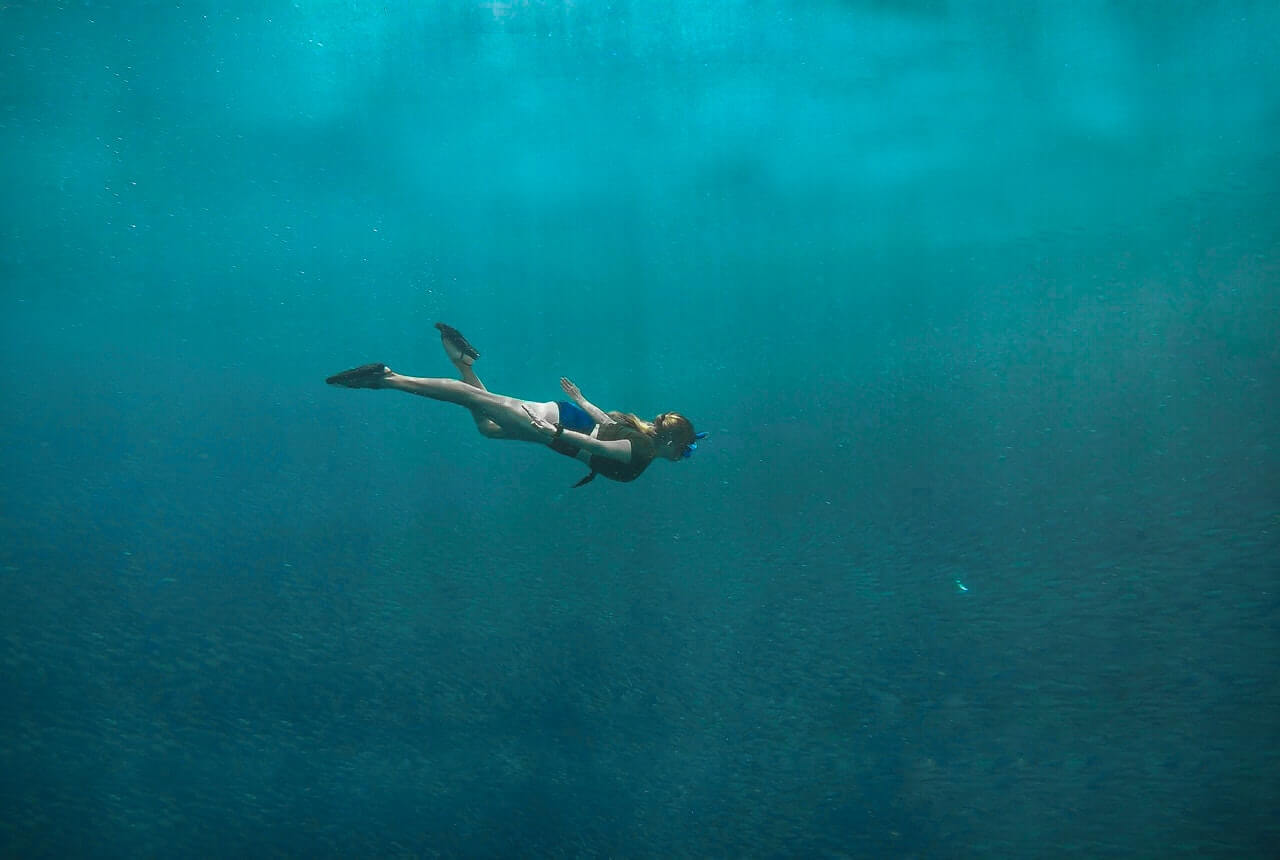
On the other hand, snorkeling is a more leisurely activity focused on exploring the underwater world. Although it may not be as intense as swimming, snorkeling still offers a low-impact exercise that can help improve your cardiovascular fitness and overall well-being. The use of a snorkel and mask when snorkeling allows you to breathe comfortably and observe marine life, creating a unique and engaging experience.
Keep reading on to learn more about the upsides and downsides of both swimming and snorkeling, as well as how they compare to each other, to help you make an informed decision on which one you should focus on.
The Physical Aspects
The Muscles Involved

When it comes to working out your muscles, both snorkeling and swimming offer unique benefits. Swimming is a full-body workout that engages all major muscle groups in your body, including your arms, legs, and core. With each stroke, you’re simultaneously strengthening and toning your muscles, as well as improving flexibility in your joints.
On the other hand, snorkeling primarily targets your arms and legs, as you use them to propel yourself and maintain balance underwater. The resistance from the water provides a natural, low-impact way to tone these muscles, making it especially beneficial for those with joint issues.
To be clear, snorkeling basically is swimming, albeit a more relaxed version since you’ll be spending most of your time floating along the water’s surface. Most snorkelers even wear a buoyancy aid so that they do not have to expend energy staying afloat.
However, to maneuver around the water or to dive underwater while snorkeling requires swimming ability, and it will work much of the same muscles.
Cardio and Endurance
Cardiovascular health and endurance are critical aspects of any exercise regime. Swimming is well-known for its cardio benefits, as it requires your heart and lungs to work harder to supply oxygen to your muscles. Just two and a half hours of swimming per week can decrease the risk of chronic illnesses and improve overall health.
Again, snorkeling also offers cardio benefits, albeit to a lesser degree than swimming. Since you’re moving at a more leisurely pace while snorkeling, your heart rate remains lower, but it still provides a decent workout for your cardiovascular system.
Endurance-wise, both swimming and snorkeling can help improve your stamina over time, as regular practice allows your body to adapt and become more efficient in movement and oxygen use.
Health Benefits and Risks
Mental Health Benefits
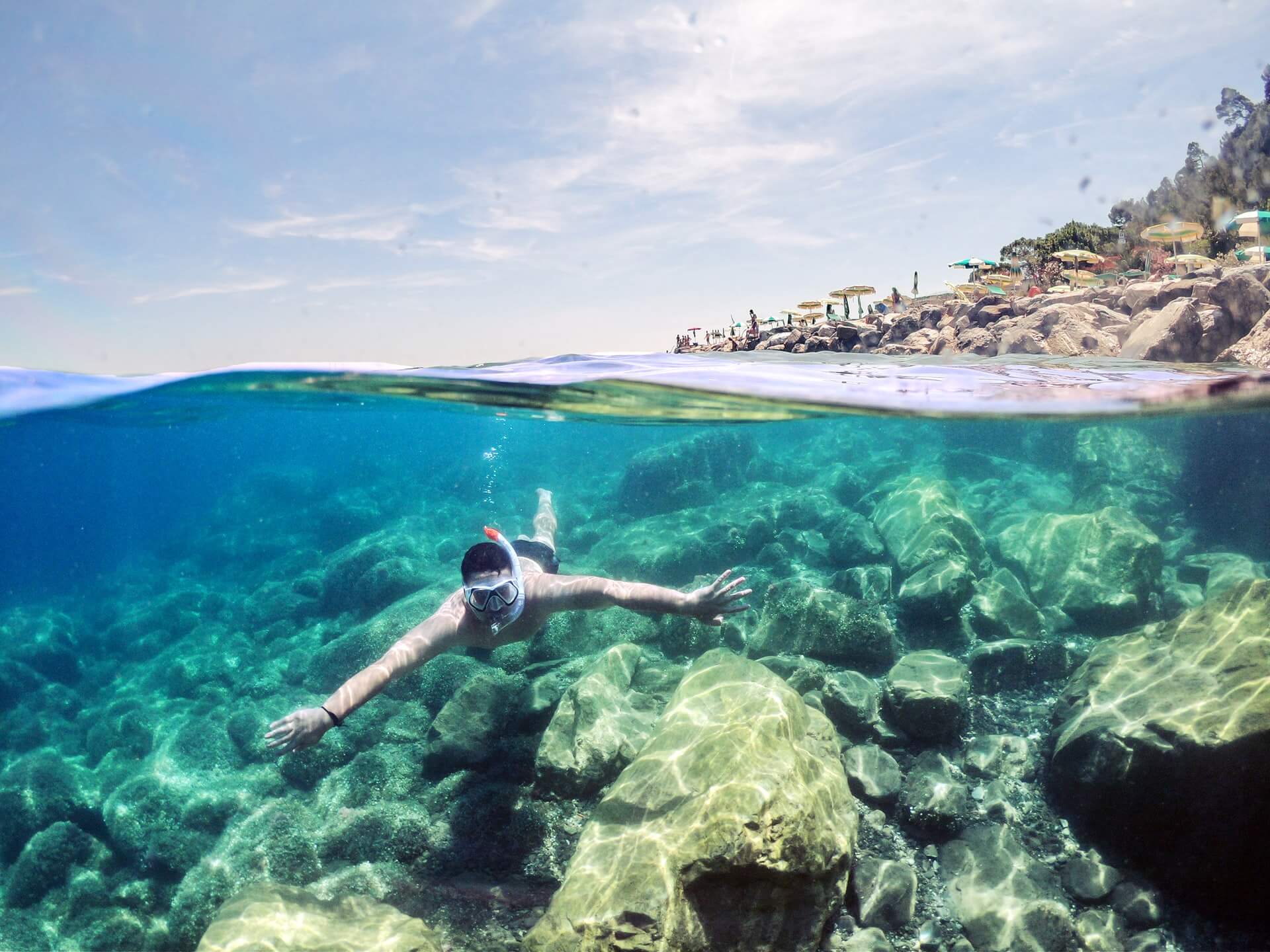
Both snorkeling and swimming can have a significant impact on your mental health. Engaging in these activities can help alleviate anxiety and depression. The meditative aspects of swimming, combined with the soothing effect of being in water, offer a great way to reduce stress.
Similarly, exploring the underwater world while snorkeling can be a mesmerizing experience that diverts your mind from daily worries, helping you relax and improve your mental well-being.
Physical Health Benefits
Swimming is a low-impact aerobic exercise that offers numerous health benefits. It can improve your cardiovascular health, increase your muscle strength and endurance, and contribute to weight loss by burning calories. As a full-body workout, swimming also helps with your overall aerobic fitness, making you healthier and more resilient.
On the other hand, snorkeling is more of a leisurely activity but still provides some physical benefits. It’s an excellent way to explore marine life while getting some exercise. Although it doesn’t burn calories as much as swimming, snorkeling can still contribute to toning your muscles and improving your lung capacity.
Risks
However, be aware that swimming and snorkeling could also pose some risks. For instance, swimmers and snorkelers may be prone to ear infections, so make sure to dry out your ears using ear drying drops.
When swimming outdoors, swimmers and snorkelers are faced with the same dangers like currents, marine life, boats, sudden changes in weather, and other water-users, to ensure you stay safe and enjoy your time in the water.
Swimming vs Snorkeling: Similarities and Differences
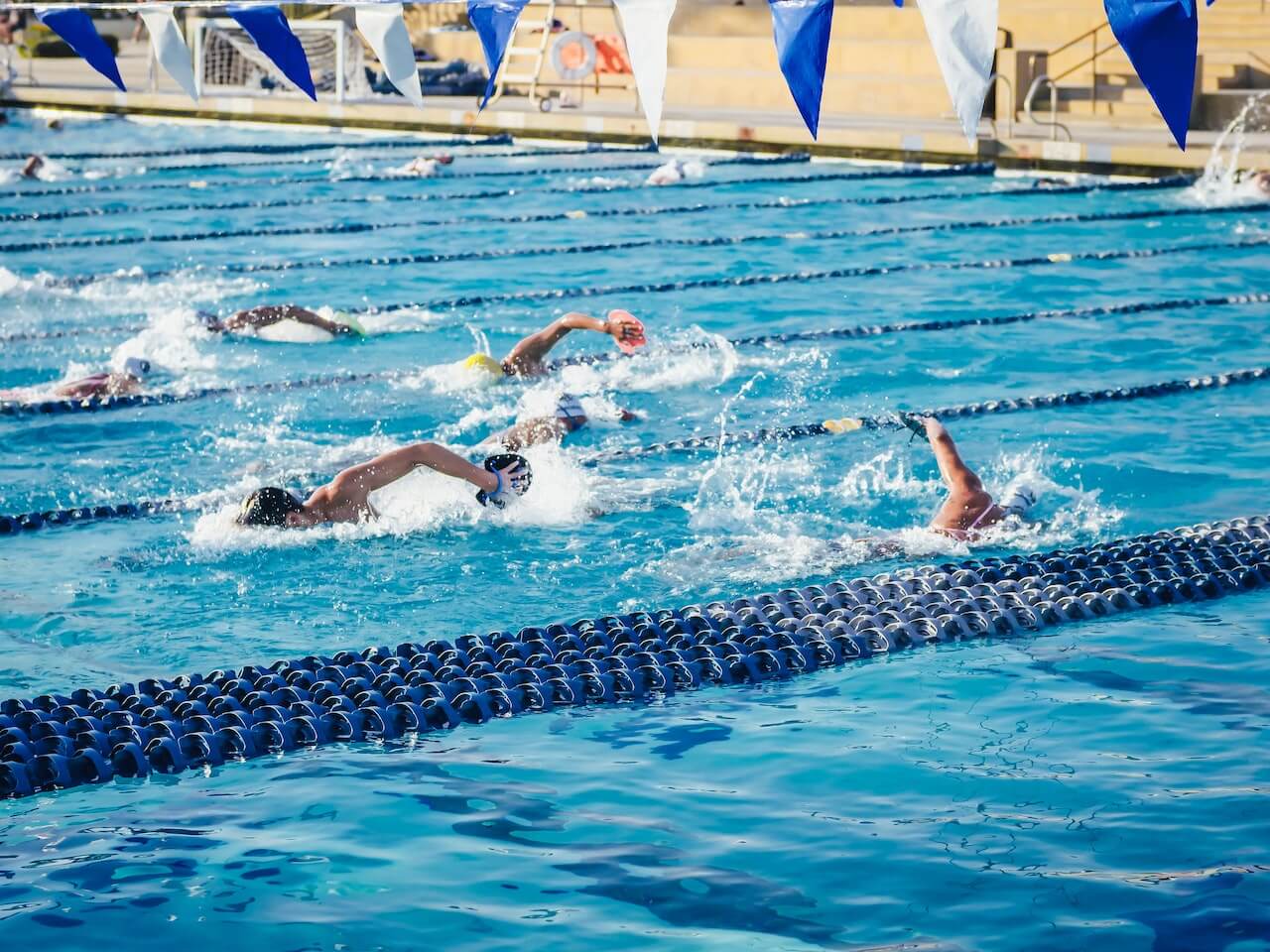
Similarities
- Aquatic Nature: Both activities are done in water, whether it’s in the ocean, a lake, or a pool.
- Cardiovascular Workout: Both swimming and snorkeling can provide cardiovascular benefits, enhancing lung and heart health.
- Muscle Engagement: Each activity engages multiple muscle groups, albeit in different manners. Water resistance in both activities aids in muscle toning.
- Caloric Burn: Engaging in either swimming or snorkeling burns calories, contributing to weight management.
- Breathing Techniques: Both require efficient breathing techniques, especially when done for extended periods. While swimming often involves rhythmic breathing patterns, snorkeling uses the snorkel for steady breathing.
- Low Impact: Both are low-impact exercises, meaning they are gentler on the joints compared to many land-based activities.
- Recreational and Professional: Both activities can be enjoyed recreationally, but there are also professional aspects such as competitive swimming or professional snorkel guides.
- Safety Precautions: Both require knowledge of safety precautions, especially when done in open water, to protect against hazards like strong currents or marine life.
- Enhanced Endurance: Regular engagement in either activity can lead to increased endurance over time.
- Gear Dependency: While basic swimming doesn’t require much equipment, competitive swimmers often use gear like goggles, caps, and specific swimwear. Snorkelers need masks, snorkels, and often fins. Both activities benefit from the use of proper gear.
Differences
- Intensity: Swimming, especially competitive or lap swimming, is typically a more intense workout than leisurely snorkeling.
- Muscle Engagement: Swimming engages a broader set of muscles due to the various strokes involved. Snorkeling primarily focuses on the legs, especially when using fins.
- Purpose: Swimming is often pursued for fitness, competition, or rehabilitation. Snorkeling, while offering fitness benefits, is also geared towards relaxation and exploration.
- Equipment: Snorkeling requires specific equipment like a snorkel and mask (and often fins) to engage in the activity. In contrast, swimming requires minimal equipment.
Choosing the Right Exercise for You
Evaluating Your Skill Level
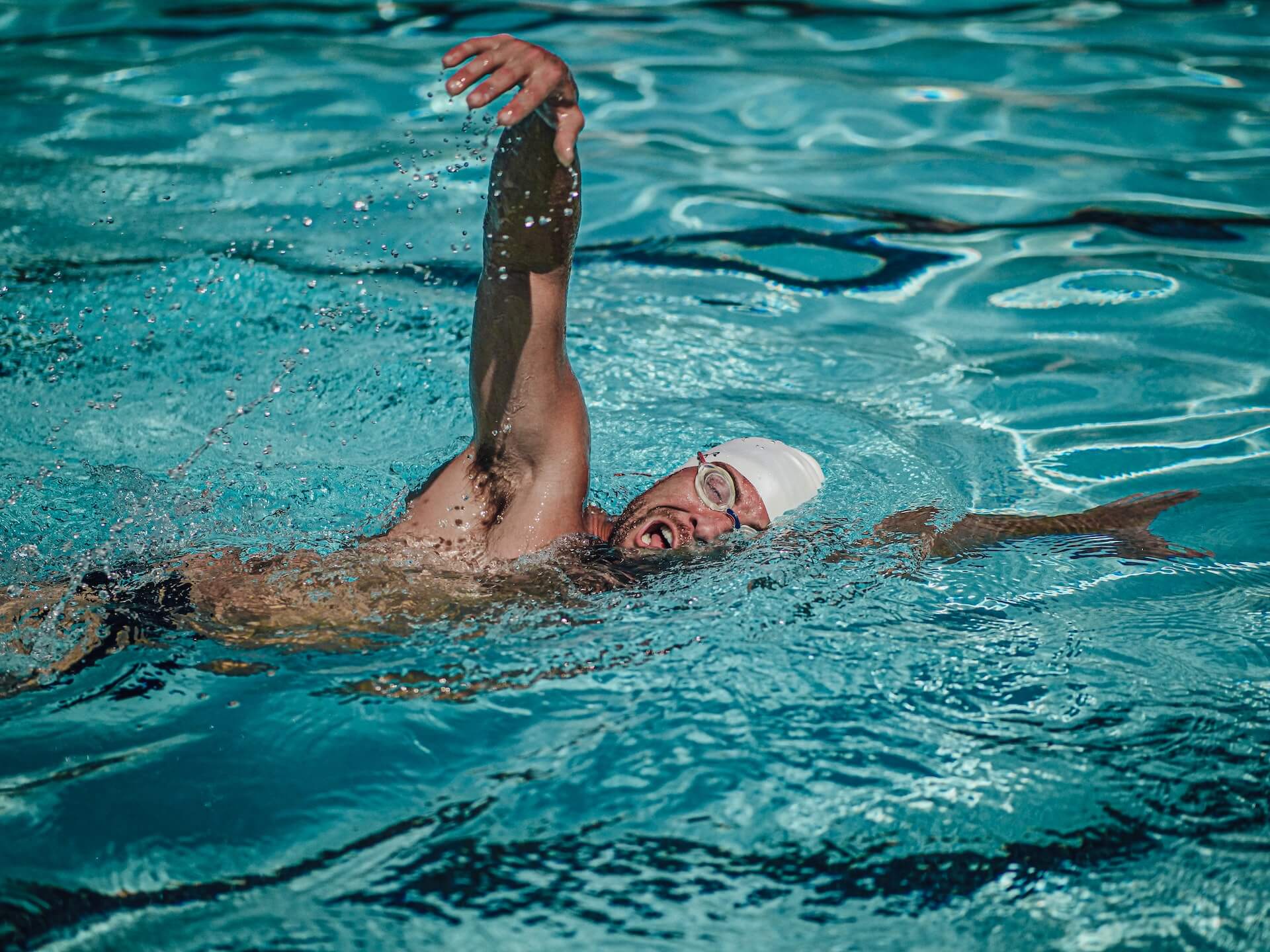
When deciding between swimming and snorkeling, it’s important to consider your skill level and experience. Swimming can be an excellent form of exercise for all ages, as it provides a low-impact workout and helps you cool off in the water.
However, to fully benefit from swimming, you’ll need to be proficient with at least a couple of swimming strokes and have a good level of coordination between your arms, legs, and body movements.
Snorkeling, on the other hand, is a more accessible option for beginners and children. With a snorkel, you can easily observe the underwater world and marine life without learning complicated swimming techniques.
All you need to be able to do is kick your legs and breathe through a snorkel—no arm movements are required. This makes snorkeling a more recreational and low-energy choice compared to swimming.
Mixing Up the Routine
Both swimming and snorkeling can bring significant benefits to your fitness and mood. Swimming helps improve your cardiovascular health, strengthens your core, and can improve your mood in both men and women. Snorkeling, while less intensive, still allows you to engage your muscles and build your stamina at a slower pace.
To keep things interesting and make your workouts more effective, it’s worth mixing up your routine by incorporating both swimming and snorkeling into your exercise plan. You can enjoy the therapeutic aspects of being in nature, explore the marine environment, and have a fun and engaging workout.
Depending on your goals and preferences, you can alternate between swimming for a more intensive workout and snorkeling for a relaxing and enjoyable experience. This way, you’ll benefit from both activities, engage different muscle groups, and maintain a healthy lifestyle while enjoying the wonders of water-based sports.
Common Misconceptions and Myths
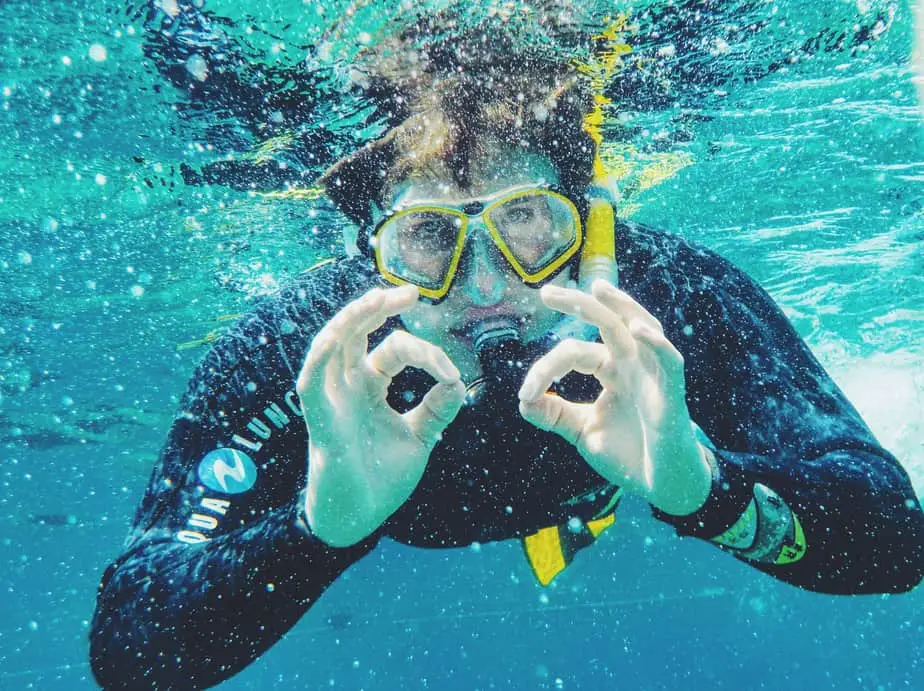
When comparing the benefits of swimming and snorkeling, there are many misconceptions and myths surrounding the two activities. In this section, we’ll address some of these misunderstandings.
Myth #1 – Snorkeling isn’t a real exercise
First, let’s consider the idea that swimming is the only real exercise, while snorkeling is just a leisurely activity. While it’s true that swimming is a competitive sport requiring a lot of leg power and engaging multiple muscle groups, snorkeling can also offer an effective workout.
When you’re snorkeling, especially in strong currents or deeper areas of the ocean, you rely on your muscles and stamina to navigate the water. The conditions aren’t always idyllic, and it can be really exhausting if you have to deal with choppy waters.
Myth #2 – Swimming is only beneficial if you’re an elite athlete
Moreover, you might have heard that only competitive swimmers or athletes can benefit from swimming. This statement is not accurate. Swimming in shallow water and even in your local lake is a low-impact exercise that can benefit everyone.
Regardless of your fitness level, swimming works several muscle groups and helps improve heart health, making it an excellent option for those managing conditions like diabetes, heart disease, or arthritis.
Myth #3 – You can only snorkel in coral reefs
There’s also a misconception that snorkeling can only be enjoyed in areas with coral reefs. While reef-rich locations add spectacular beauty to the experience, snorkeling in open water or unadorned ocean environments can still bring you in contact with various marine life and provide an enjoyable workout.
Myth #4 – You need to be a strong swimmer to start snorkeling or swimming
Lastly, one of the biggest misconceptions about swimming and snorkeling is that you need to be an adept swimmer to enjoy these activities. However, even beginners can partake in these exercises by starting in shallow waters, wearing flotation devices, or opting for guided tours with experts for a safe and enjoyable experience.
Frequently Asked Questions
Which burns more calories – snorkeling or swimming?
Swimming typically burns more calories than snorkeling because it engages more muscle groups and is usually more intense. However, both activities can help you burn calories, improve cardiovascular health, and tone your muscles. The exact amount of calories burned depends on factors such as your weight, intensity of exercise, duration of the activity, and weather conditions.
Is swimming or snorkeling better for overall fitness?
Both swimming and snorkeling offer unique benefits for overall fitness. Swimming provides a full-body workout, engaging multiple muscle groups and improving your cardiovascular endurance.
On the other hand, snorkeling is a low-impact activity that helps improve your breathing technique, increase lung capacity, and reduce neck strain, as mentioned in this source. So, it depends on your individual goals and preferences as to which one is better for overall fitness.
What are the mental health benefits of snorkeling compared to swimming?
Snorkeling can be a relaxing and stress-relieving activity as you explore marine life in shallow waters such as coral reefs or rocky coastlines. Observing the underwater environment can reduce stress and provide a sense of tranquility.
Swimming, on the other hand, can also be relaxing but mainly focuses on physical exercise. Choosing between the two depends on your personal preference and the type of mental health benefits you seek.
Can weaker swimmers benefit more from snorkeling or swimming?
Snorkeling can be easier for weaker swimmers since it does not require mastering multiple strokes, and allows you to breathe easily with your face in the water. Additionally, using fins can make it less strenuous and enhance your buoyancy.
In contrast, swimming requires more skill, technique, and physical effort. Weaker swimmers can still benefit from both activities, but snorkeling may be a more accessible option.
Which activity offers greater variety and exploration, snorkeling or swimming?
Snorkeling offers greater variety and exploration because it allows you to observe a wide range of marine life in their natural habitats. Snorkeling is more about exploring and appreciating the underwater world, whereas swimming mainly focuses on exercising and improving your technique. Both can be enjoyable and offer unique experiences, but snorkeling has the edge in terms of exploration.
Do snorkeling and swimming differ in their impact on joint health?
Yes, snorkeling and swimming have different impacts on joint health. Snorkeling is a low-impact activity, making it ideal for people with joint issues or those who prefer a gentler workout. Swimming, being a more intense exercise, can put more stress on your joints.
However, being a non-weight-bearing activity, swimming is still considered low-impact compared to other exercises like running. Whichever you choose, always remember to listen to your body and consult a healthcare professional if you have concerns about joint health.
Sources:
- https://www.cdc.gov/healthywater/swimming/swimmers/health_benefits_water_exercise.html
- https://newsnetwork.mayoclinic.org/discussion/swimming-for-better-health-and-to-avoid-injuries/
- https://www.health.harvard.edu/blog/simplify-your-workout-with-lap-swimming-2019070117254
- https://www.triathlete.com/gear/swim/ask-a-gear-guru-whats-a-swim-snorkel-for/

